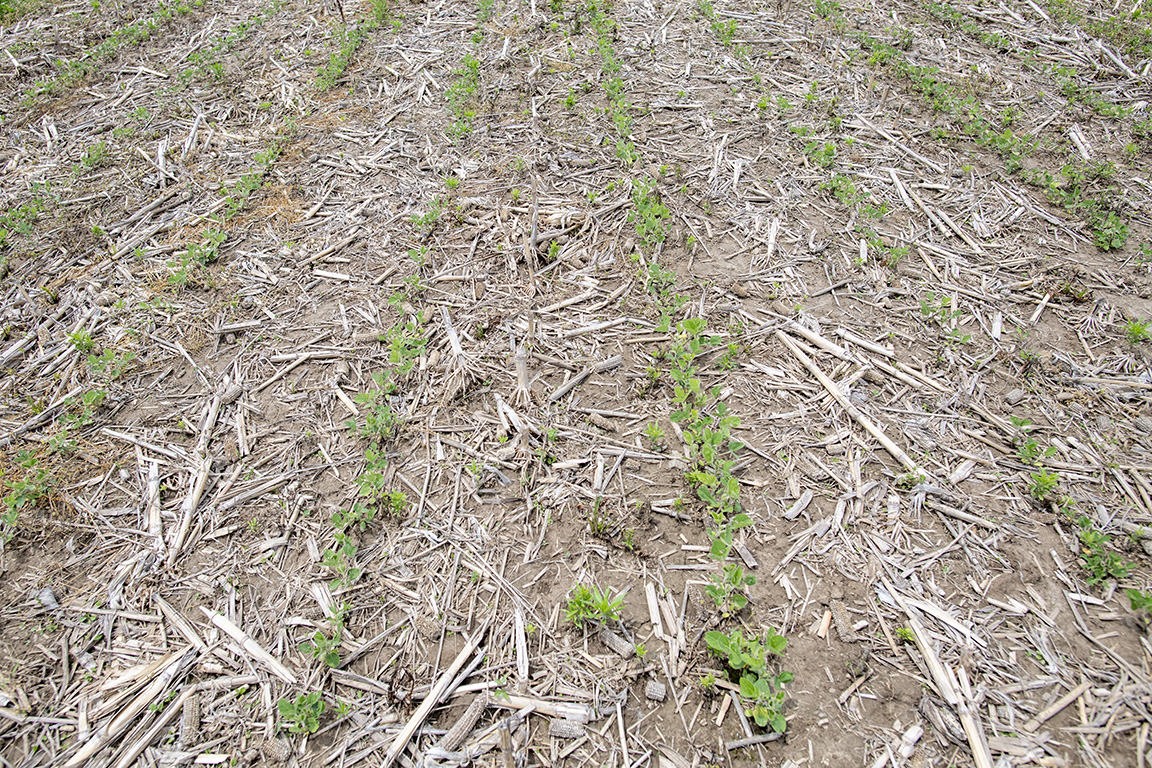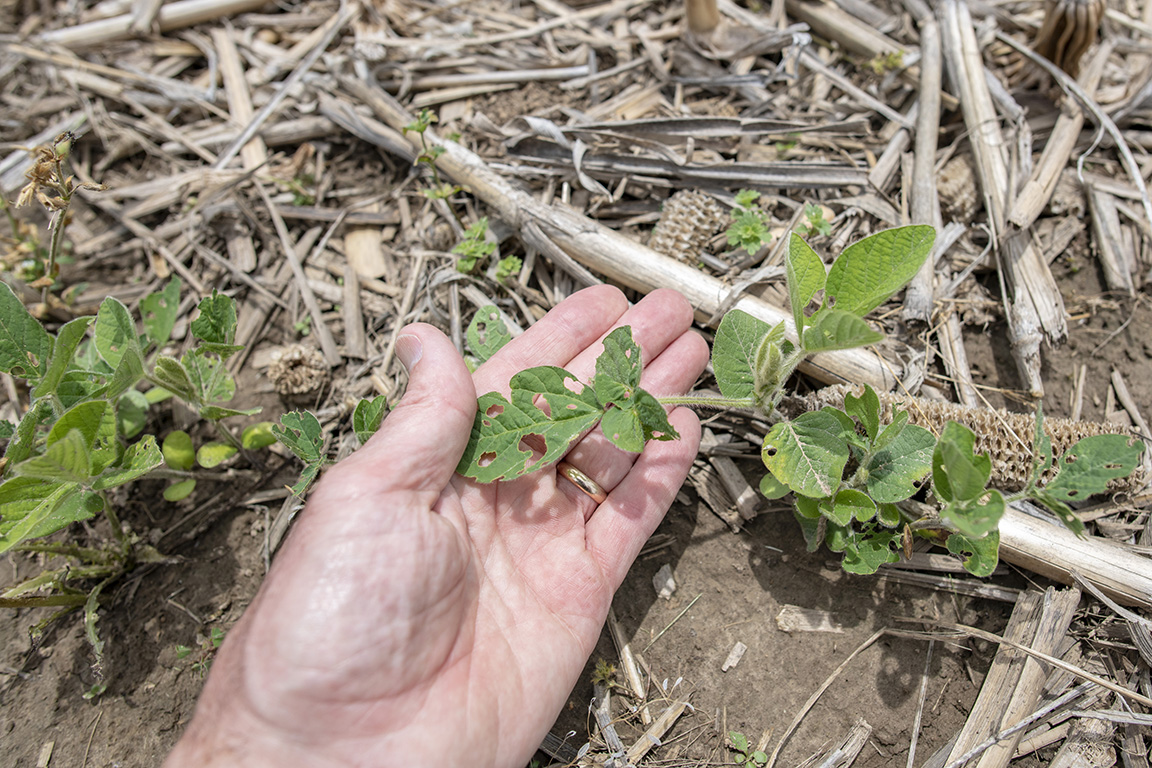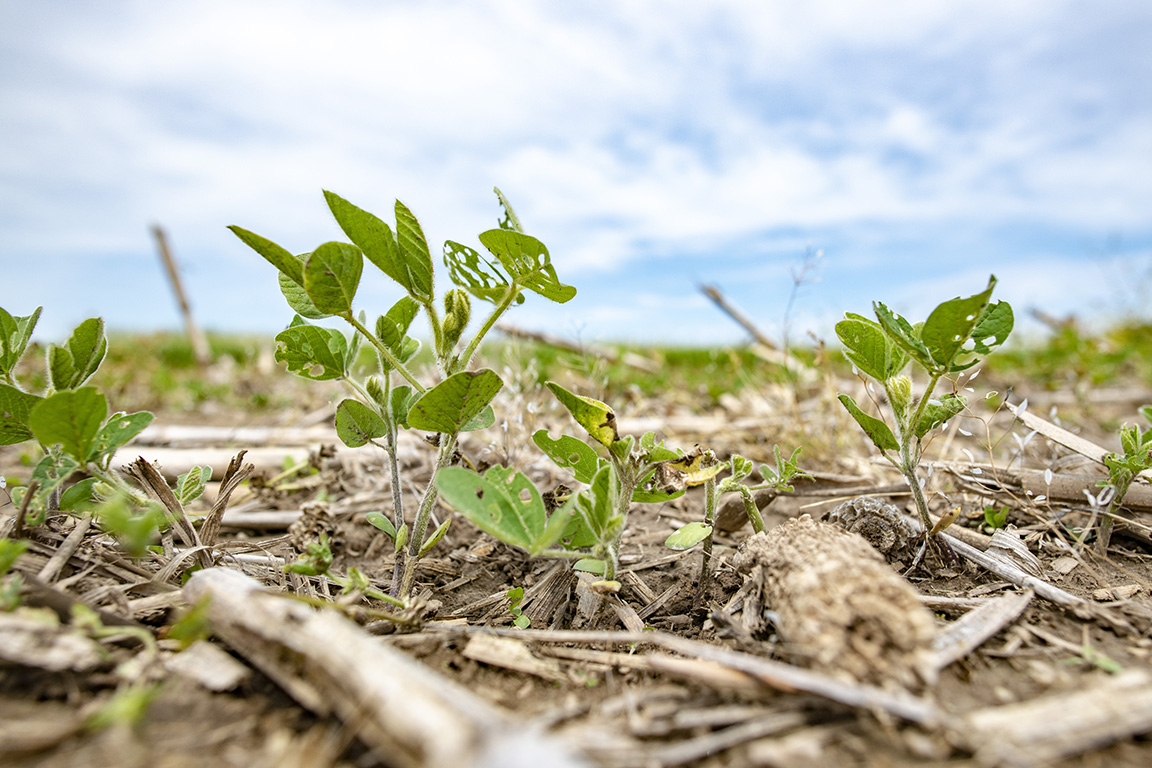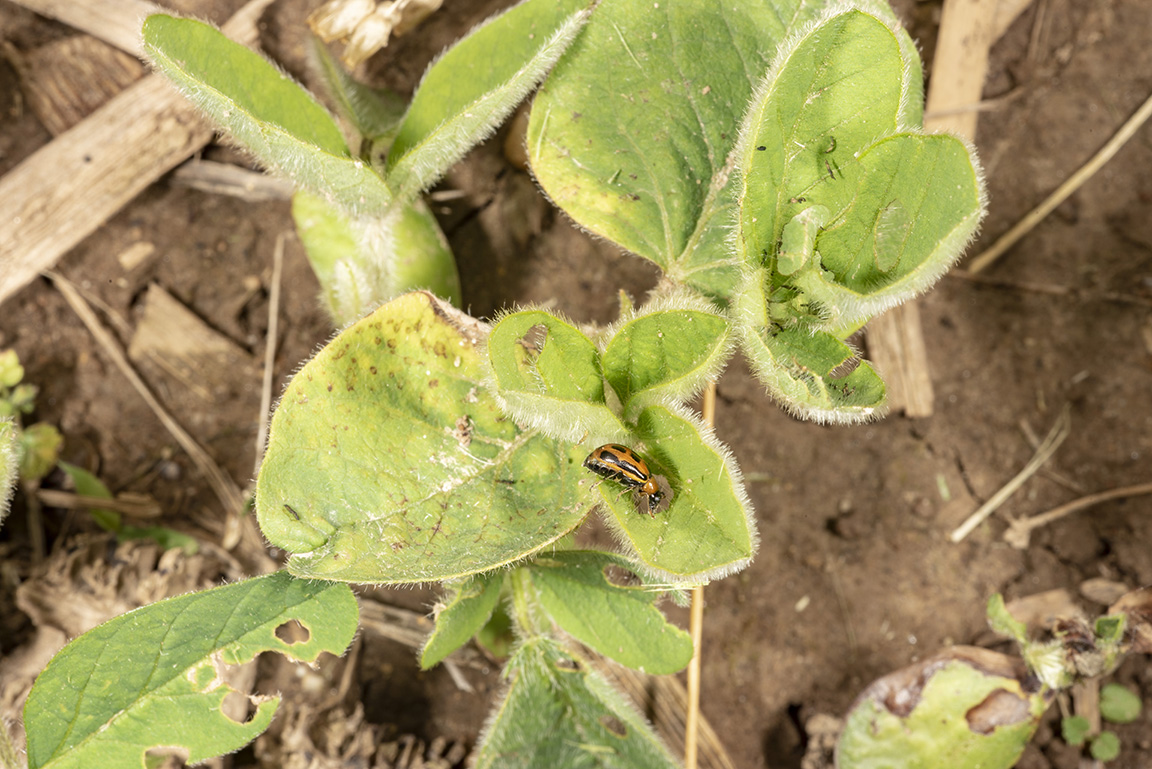This season, thousands of Indiana’s acres of soybean were planted in early April because the soil and temperatures were ideal. In hindsight, we know the barrage of freeze/snow, multiple frosts, heavy rains, and crusted soils that those plants have been subjected to. As well, at the Diagnostic and Training Center, we got some plots planted in that early period. Through it all, the ugly (e.g., yellowish, crinkled, stunted, distorted, etc.) soybean plants are mostly still there, though growth is painfully slow. Soybean plots planted just a week ago, seem to be jumping out of the ground, and rivaling height of the early-planted. To add misery, bean leaf beetle has zeroed-in on these sick beans, right to the row. Is this bean leaf beetle feeding an additional stress that should be controlled!?!?

April 5 planted soybean plot, pictured on May 27, has struggled, yet mostly survived. (Photo Credit: John Obermeyer)
Comment: Your attention was immediately drawn to the damaged trifoliate leaf in my hand. Carefully view the other leaves/plants…not nearly the feeding. Plants at this stage of growth can withstand 40-50 percent defoliation (leaf removal) without impacting yield. For reference, the damaged leaf in my hand is about 25% defoliated.
Comment: Again, we notice the holes in the leaves, among the other problems. Harsh environmental factors, over multiple weeks, can’t be “fixed” by treating the beetles.
Comment: Some will argue that additional stressors, e.g., beetle feeding, should be stopped to help these plants fully recover. “Just the facts ma’am” – these overwintering beetles are naturally dying off, as they have already done their mating and egg laying. The few beetles remaining in this field will be gone within days. Relook at the previous defoliation pictures, you will see that most damage is on older plant growth (lower leaves). For those wanting to solve this field’s woes with insecticide, it is “throwing good money after bad.”
Happy scouting!





